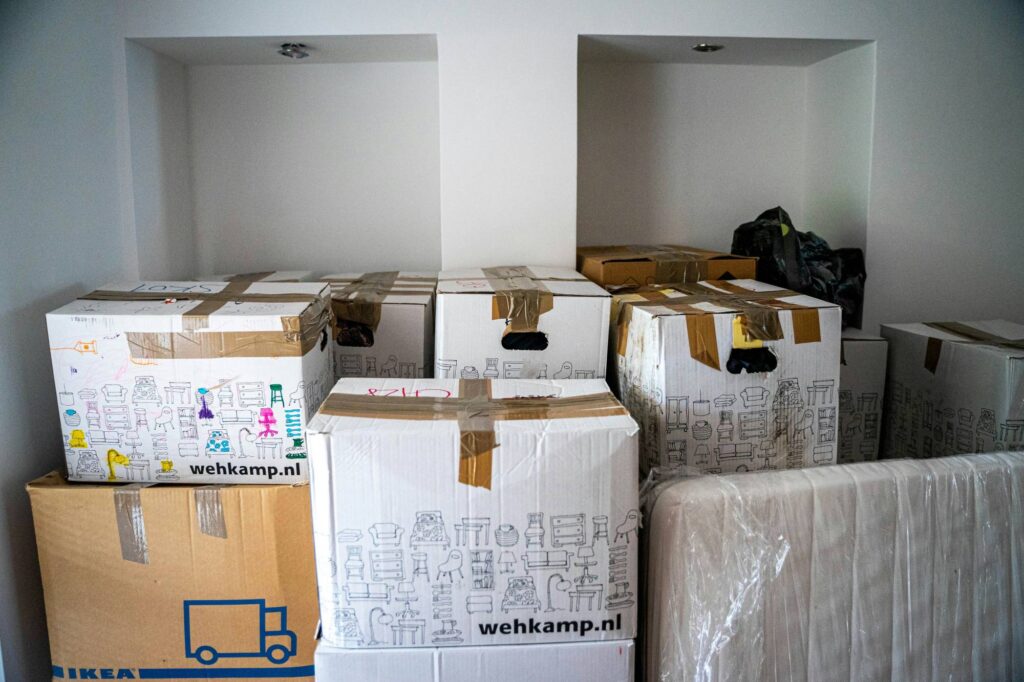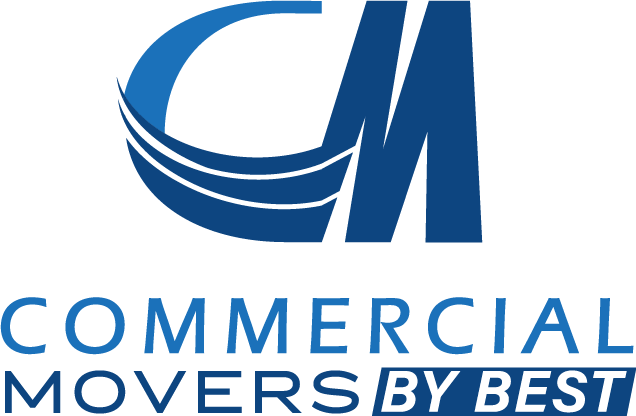Moving a commercial office is a major undertaking that requires more than just boxes and a few strong hands. Companies must coordinate logistics, protect valuable equipment, and minimize downtime—all while staying within budget. Understanding what goes into the average cost of movers helps decision-makers plan better and avoid surprise expenses.
Here are five key insights into what’s typically included in commercial office moving costs.
Table of Contents
Key Takeaways
✔ The average cost of movers depends on office size, distance, services, and timing.
✔ Moving company price estimates should always include a line-item breakdown to avoid hidden fees.
✔ Local movers cost less for short-distance jobs but may charge hourly rates.
✔ Long distance movers pricing often includes flat rates, fuel, tolls, and additional logistics.
✔ Packing, furniture disassembly, and IT handling are typically part of full-service commercial moves.
✔ Planning moves outside business hours can reduce disruption and control how much is a moving service.
✔ Comparing service quality—not just price—is key to choosing the right commercial mover.
How Much Do Movers Cost?
The cost of hiring movers for a commercial office can vary widely depending on several factors like distance, office size, and included services. On average, businesses can expect moving company price estimates to range from $1,500 to $10,000 for local moves and $5,000 to $30,000 or more for long-distance relocations. While hourly rates might apply to local jobs, long distance movers pricing often includes flat fees based on mileage and shipment weight.
To answer the common question—how much do movers cost—the best approach is to get detailed quotes based on specific business needs.
What Are Included In Office Moving Costs?
1. Pre-Move Planning and Coordination
Planning is a major part of the average cost of movers, especially for commercial relocations. Before any equipment is packed or furniture is moved, professional movers invest time in organizing the logistics. This ensures that the move stays efficient, safe, and aligned with the company’s timeline.
How Pre-Move Services Set the Foundation
- Site Assessment and Inventory Walkthrough: Movers conduct an on-site visit to assess everything that needs to be moved, from office furniture to specialized equipment. This walkthrough helps determine the labor, equipment, and vehicles required—impacting moving company price estimates directly.
- Customized Move Plan: Based on the site visit, the moving company develops a detailed plan tailored to the business’s needs. This includes timelines, floorplans, team coordination, and labeling systems to ensure an orderly move and minimal disruption.
- Communication and Scheduling: Clear communication is set up between the business and the movers to manage expectations and deadlines. Many companies offer a dedicated move coordinator who ensures every detail is handled—something often reflected in the average cost of movers.

2. Packing, Labeling, and Organization
Packing might seem straightforward, but in a commercial setting, it’s a major cost driver. The way items are packed, labeled, and organized can affect both speed and efficiency on moving day. Many businesses rely on professional crews to handle this step carefully and thoroughly.
How Packing Impacts Commercial Moving Costs
- Professional Packing Services: Movers often supply trained teams to pack everything from office furniture to fragile electronics. The cost includes materials like boxes, bubble wrap, crates, and protective covers, all of which influence the average cost of movers.
- Detailed Labeling Systems: Each item, box, or piece of equipment gets labeled according to department or floor layout in the new space. This system reduces downtime after the move, which is factored into most moving company price estimates.
- Efficient Item Grouping: Movers organize packed items by category and priority—such as essential files or IT gear that needs quick setup. This approach prevents delays during unpacking and plays a key role in calculating how much is a moving service overall.
3. Furniture Disassembly and Reassembly
Most office furniture isn’t designed to move as-is. Desks, cubicles, and conference tables often need to be taken apart and reassembled in the new location. These services are typically built into the total local movers cost or long distance movers pricing depending on the job’s scope.
How Furniture Handling Adds to Moving Costs
- System Furniture Breakdown: Workstations and cubicle systems require specific tools and expertise to dismantle without damage. Professional movers factor in both labor time and care, which can raise the average cost of movers.
- Rebuilding at the New Office: Reassembling desks, shelving, and tables to match the new office layout takes time and precision. Teams often follow floor plans provided by the business, ensuring a seamless transition and justifying part of the moving company price estimates.
- Specialized Equipment Handling: Some furniture pieces include built-in electrical components or require lift support. Movers bring the proper tools and experience for safe handling, and this specialized service influences how much is a moving service.
4. Technology and IT Equipment Handling
Technology is the heartbeat of most modern offices, making its safe relocation a top priority. Commercial movers usually include special handling for IT infrastructure in their pricing, which can significantly impact how much do movers cost overall. This often includes packing, transport, and even reconnecting systems.
How IT Relocation Impacts Cost Estimates
- Workstation Disconnect/Reconnect Services: Movers or third-party tech teams disconnect monitors, phones, and cables at the old site and reconnect them at the new one. This is not just a convenience—it’s a cost-saving service that reduces downtime and affects moving company price estimates.
- Server and Data Center Transport: Sensitive data equipment requires extra care, including padded crates, climate control, and insurance. These precautions significantly raise long distance movers pricing when relocating offices across states or regions.
- Cable Management and Setup: Some movers offer cable cleanup and structured wiring services during reinstallation. Though optional, these services often appeal to businesses focused on reducing clutter and are included in premium average cost of movers packages.
5. Post-Move Cleanup and Waste Disposal
Once the move is complete, there’s often more to do than just unpack. Businesses may need debris removal, old furniture disposal, or recycling of packing materials. These services are frequently available through the moving company at an added fee.
How Cleanup Services Affect Total Moving Costs
- Debris and Trash Removal: After unpacking, boxes, wrap, and excess materials can pile up quickly. Many movers offer cleanup services as an add-on, and this convenience contributes to the final how much is a moving service calculation.
- Furniture Disposal and Liquidation: If the business is downsizing or upgrading, movers may help dispose of old desks, chairs, or filing cabinets. This is especially helpful in urban areas where disposal rules are strict and can affect local movers cost.
- Final Walkthrough and Punch List: Some movers include a post-move inspection to address any missing items, damages, or incomplete tasks. It’s a quality assurance step that’s often reflected in higher-tier moving company price estimates.
How to Build a Commercial Move Timeline That Works Around Business Hours
Planning a commercial move around business hours requires careful timing and coordination. Companies need to stay productive while making space for movers, packers, and equipment installers. Thoughtful scheduling can directly influence how much do movers cost by reducing overtime or rushed labor fees. Here’s how to create a realistic timeline that avoids downtime and controls the average cost of movers:
1. Start Planning at Least 8–12 Weeks in Advance
A well-timed move starts with early planning, especially for medium to large offices. This window gives companies time to gather moving company price estimates, finalize budgets, and schedule the best moving date. It also allows more flexibility to compare local movers cost and secure top-rated providers before schedules fill up.
2. Choose a Low-Impact Move Window
Many businesses plan moves for evenings, weekends, or slow periods in the sales cycle. These off-peak times can reduce disruption and sometimes lower the average cost of movers, especially for hourly labor rates. Some companies also avoid end-of-month dates, when how much is a moving service tends to rise due to demand.
3. Coordinate Department-Specific Packing Schedules
Rather than shutting down all operations, stagger packing by department over several days. Start with low-priority teams and schedule essential departments—like IT or operations—last. This strategy maintains productivity and may reduce total labor time factored into moving company price estimates.
4. Reserve Elevator and Loading Dock Access in Advance
In office buildings with shared facilities, scheduling elevator and dock time can be tricky. Companies should book these early and align with the mover’s arrival time to avoid delays. Missed time slots often increase local movers cost or add fees that inflate the average cost of movers.
5. Schedule IT Teardown and Setup Separately
Disconnecting and reconnecting tech equipment is a major task that can’t be rushed. Plan for a dedicated day or team to handle servers, workstations, and wiring to avoid tech-related downtime. When estimating how much is a moving service, this phase is often billed separately or requires subcontracted specialists.
6. Build in Time for Post-Move Adjustments
Even the smoothest move requires a few days to settle in—furniture tweaks, tech fixes, and cleanup. Add buffer days for these tasks so staff aren’t caught working in chaos. Accounting for this step helps manage expectations and gives a more accurate view of the full long distance movers pricing or local move cost.
How to Choose Between Local and Long Distance Movers
The global office relocation services market is anticipated to expand steadily at an annual rate of 3.3% to reach US $14.6 billion by 2032. This reflects a growing demand for tailored, efficient moving solutions. However, not all commercial moves are created equal—what works for a nearby relocation may not suit a multi-state transition.
Here are six key factors to help guide the right choice in White Plains, NY:
1. Consider the Total Distance and Route Complexity
Local moves typically fall within 50 to 100 miles, while long-distance relocations cross state lines or cover hundreds of miles. Distance impacts fuel charges, tolls, and required driver certifications. These factors are reflected in both the average cost of movers and overall moving company price estimates.
2. Look at Required Licenses and Insurance Coverage
Long-distance movers must meet federal licensing standards and carry specific insurance policies for interstate transport. If a move crosses state borders, companies should confirm DOT numbers and cargo protection. This compliance plays into the reliability—and cost—of long distance movers pricing.
3. Factor in Move Duration and Scheduling Flexibility
Local movers often complete jobs in a single day, while long-distance moves may take several days to a week. Delivery windows can vary depending on availability and routing. Businesses need to consider how much downtime they can afford and how that affects how much is a moving service in practical terms.
4. Evaluate the Complexity of Office Contents
Moves involving sensitive equipment, large furniture, or IT infrastructure may require custom handling. Some local movers cost less upfront but lack the experience or resources to manage high-value or specialized items across long distances. In those cases, investing in experienced long-haul pros is worth the higher average cost of movers.
5. Check for Warehousing or Storage Options
Some long-distance moving companies offer short-term storage for staged deliveries or delays in office readiness. This can be crucial if the new space isn’t move-in ready on the same day. It also impacts the quote, as moving company price estimates for long-distance jobs often include warehousing or overnight fees.
6. Balance Budget Against Service Quality
It’s tempting to go with the cheapest quote, but businesses should compare service levels, not just prices. A lower local movers cost may exclude key services like packing or setup, while a higher quote may include full-service handling. Understanding the trade-offs helps accurately gauge how much is a moving service and avoid last-minute expenses.

How to Compare Moving Company Quotes Without Overpaying
Not all estimates are created equal, and the cheapest one isn’t always the best deal. Businesses need to understand what’s actually included in a quote—and what could cost extra later.
This is especially important considering that the majority of relocations are short-distance moves, with two-thirds occurring within ten kilometers. Even seemingly simple moves can carry hidden costs if the estimate lacks transparency.
Here’s how to break down moving company price estimates to get real value without surprise fees:
1. Request a Line-Item Breakdown
A clear estimate should include labor, transportation, packing supplies, and any additional services. Avoid lump-sum quotes that make it hard to see how each part of the move is priced. Detailed breakdowns make it easier to compare the average cost of movers across companies.
2. Ask About Hourly vs. Flat Rate Pricing
Some local movers cost is based on hourly labor, while others offer flat rates for specific services. Knowing which model a company uses helps estimate costs more accurately, especially for tight timelines. Long-distance quotes usually follow flat-rate structures tied to distance and load size.
3. Clarify What’s Included in Long Distance Movers Pricing
If the move covers multiple states, confirm what’s bundled into the long distance movers pricing—fuel, tolls, driver lodging, and insurance should be itemized. Some companies include these upfront, while others add them later. Understanding these details helps prevent inflated costs after the move begins.
4. Review Liability Coverage and Insurance Fees
Insurance is often a separate line item that affects the final price. Basic coverage may be included, but full-value protection usually costs extra and varies by item value. When calculating how much is a moving service, insurance choices can push estimates higher or lower.
5. Watch for Hidden Fees and Fine Print
Extra charges for stairs, elevators, long carries, or equipment rentals aren’t always obvious. Make sure these potential add-ons are discussed before signing. Unplanned fees can dramatically increase the average cost of movers after the contract is signed.
6. Compare Services, Not Just Numbers
A lower quote may skip packing, furniture assembly, or IT handling—leading to higher costs later through third-party services. Businesses should weigh total value instead of chasing the lowest number. That’s the key to understanding how much is a moving service really worth.
Frequently Asked Questions (FAQs)
Do commercial movers offer weekend or holiday moves?
Yes, many commercial moving companies offer weekend and holiday scheduling to minimize business disruptions. While this flexibility is helpful, it can impact the average cost of movers due to premium labor rates or limited availability. It’s important to ask about weekend pricing when reviewing moving company price estimates.
Can office movers handle specialized items like lab equipment or medical devices?
Some commercial movers specialize in transporting sensitive or high-value items such as lab instruments, medical machines, or industrial tools. These services usually require trained crews and custom crating, which may raise the long distance movers pricing or local service fees. Always confirm if specialty handling is included when requesting quotes.
Are moving supplies included in commercial moving costs?
Boxes, padding, shrink wrap, and crates may or may not be included in the base rate. Some movers roll these into the overall local movers cost, while others bill supplies separately. Always ask for a full breakdown when comparing moving company price estimates to avoid unexpected charges.
How long does a typical office move take from start to finish?
A small office may take one day, while larger businesses can require several days to a week, depending on the move’s complexity. The time frame directly affects how much is a moving service, especially for hourly rate jobs. Timely planning and clear scope can help reduce delays and extra fees.
Do movers handle office furniture disposal or recycling?
Many commercial movers offer add-on services for furniture disposal, donation, or recycling. These services are typically billed separately but can be bundled into the average cost of movers if requested early. It’s a useful option for businesses downsizing or refreshing their office layout during a relocation.
Get Reliable Commercial Moving Help with Commercial Movers By Best
When it’s time to relocate an office, Commercial Movers By Best in White Plains, NY, delivers the speed, care, and precision White Plains businesses need. From detailed planning to expert handling of equipment and furniture, our team makes every step efficient and stress-free. Whether it’s across town or out of state, our transparent quotes and dependable crews make us a trusted choice for companies watching the average cost of movers without cutting corners.
Get moving on the right foot—reach out today and let Commercial Movers By Best keep your business rolling forward.


